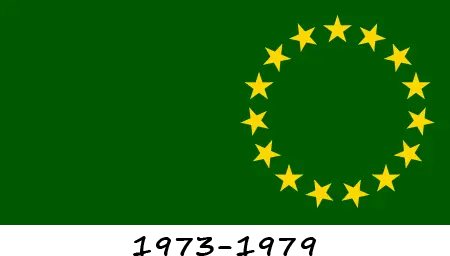The flag of the Cook Islands was officially adopted on August 4, 1979 and consists of 15 white stars arranged in a circle on a blue background on the right side of the flag and with the British flag in the upper left corner (canton).
The flag of the Cook Islands was officially adopted on August 4, 1979 and consists of 15 white stars arranged in a circle on a blue background on the right side of the flag and with the British flag in the upper left corner (canton).
The history of the Cook Islands dates back to 1595. Spanish explorer Alvaro de Mendaña was the first European to see the islands. However, the real exploration of the archipelago was carried out in 1773 by the British captain James Cook, after whom the islands were named.
In 1888, the islands officially became a British protectorate. This was done at the request of local leaders to protect the islands from Germany. During this period, the British flag, the Union Jack, was used on the islands.
At the beginning of the twentieth century, in 1901, the Cook Islands were annexed to New Zealand, again under British rule. The flag of New Zealand and the British Union Jack continued to be used as official symbols on the territory of the islands.
In 1965, the Cook Islands gained the right to self-government, remaining a freely associated territory of New Zealand. A few years later, in 1973, a competition was held to develop a new flag design, which received about 120 designs. The winner was a variant consisting of a solid green cloth, on which 15 yellow stars in the form of a circle were placed on the right side of the flag (on the opposite side from the pole), symbolizing the 15 islands that make up the archipelago. The green color symbolized nature, the strength of the earth and the nation, while the stars were symbols of the sky, faith in God, and their placement in a circle symbolized the unity between all the Cook Islands atolls.

On August 4, 1979, the last modification of the flag took place. It was decided to use the British “Blue Ensign”, as New Zealand does on its flag, i.e. a blue background with the British flag in the canton (Union Jack). At the same time, the main symbolism of the previous flag - a circle of 15 stars - was transferred to the modern flag, changing only their color from yellow to white.